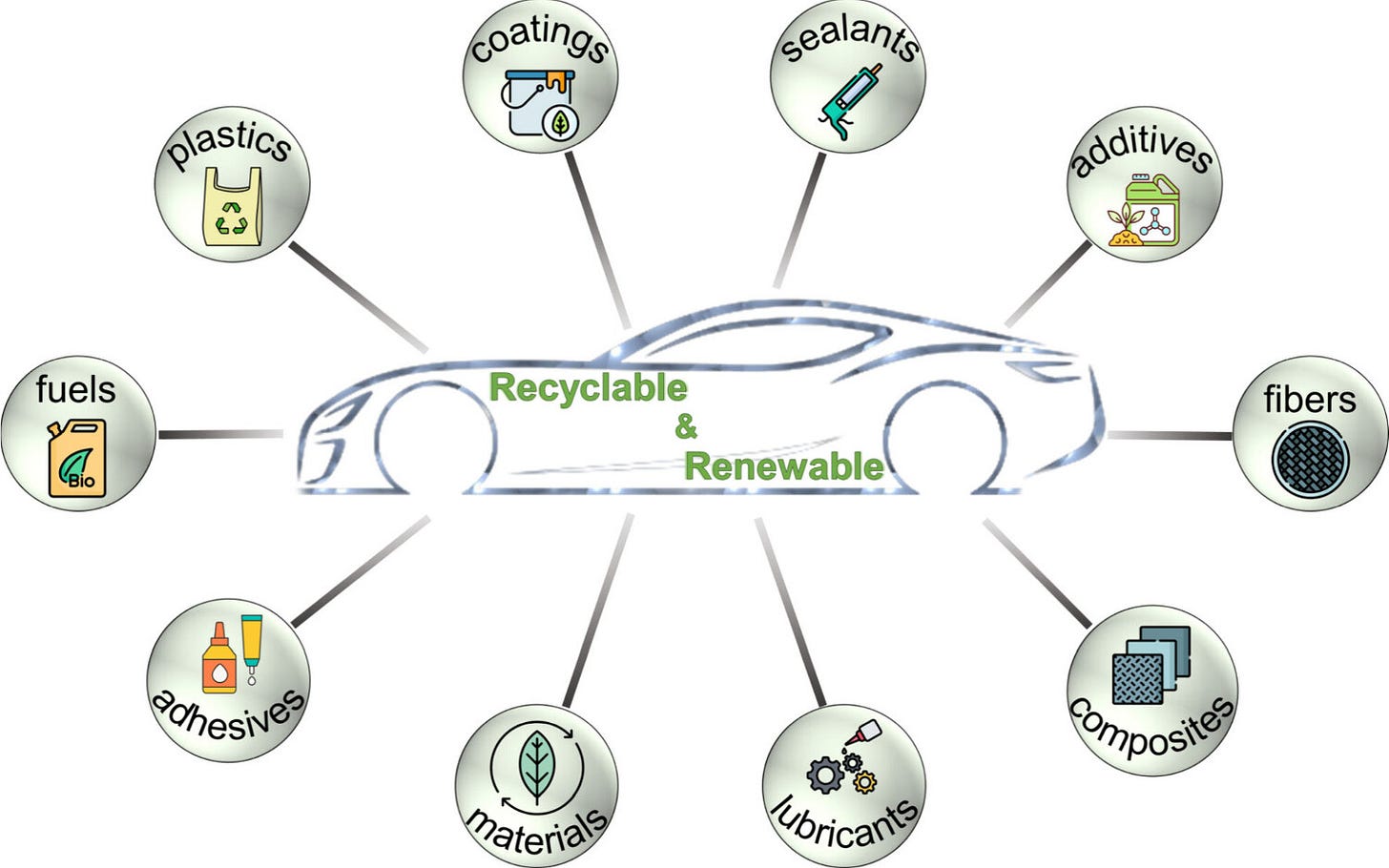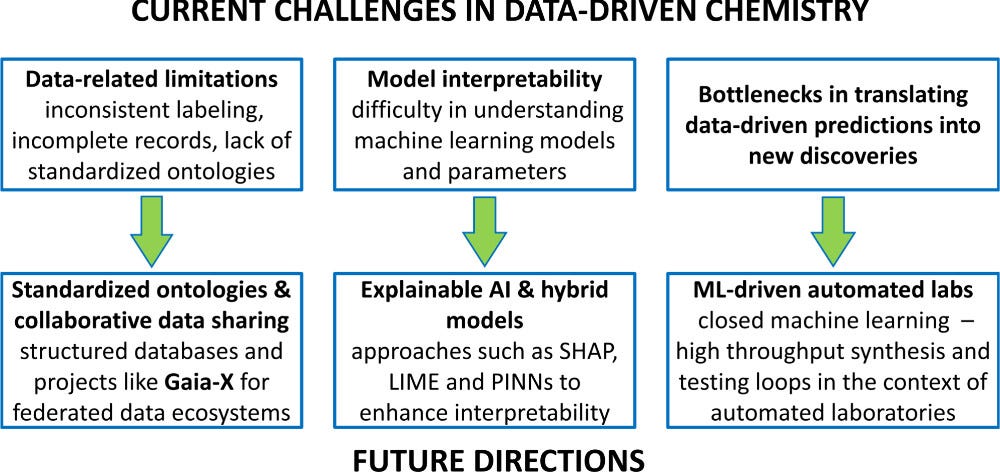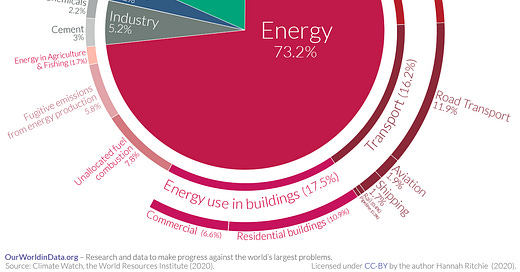Fully Recyclable Car: Pipe Dream or Green Destiny?
Bio-based chemicals point to where Fully Recyclable Cars may be destined.

Hannah Ritchie (2020) - “Sector by sector: where do global greenhouse gas emissions come from?” Published online at OurWorldinData.org. Retrieved from: 'https://ourworldindata.org/ghg-emissions-by-sector' [Online Resource]Fossil fuels formed the backbone of energy consumption in the 20th century. While their use continues unabated because of the Trump regime halting green energy initiatives of the Biden administration, climate catastrophes and global climate change will continue down paths of worst-case scenarios. Gutting green energy initiatives will bring suffering to millions of innocent individuals who had little input in the decisions to gut green energy (more to the point, suffering will occur worldwide).
Moreover, humanity clings to a sense of hope that comes from the knowledge that there are good people who will not give up. There are still groups of scientists working on sustainable answers to climate change. One area of sustainability is the “fully recyclable car.” A fully recyclable car will address the ugly truths of EVs. The EV generates as much (if not more) greenhouse gas as the internal combustion engine car. The primary reasons are the amounts of green house gas generation from the production of EVs (World Economic Forum). While the EV does not generate greenhouse gases from the tail pipe, the automotive industry must learn to address its total carbon foot print. That is where the fully recyclable car comes into play.
The concept is more than a pipe dream from a sci-fi novel of the 24th century. However, it is considered to be a “chemistry moonshot” of sorts (Schoemaker). Much akin to the 60s space race, the use of AI in conjunction with a stepwise elimination of fossil fuels in the car manufacturing process. In ways analogous to building the Apollo space program—from Mercury to Gemini to Apollo— the fully recyclable car would be built in stages. Completely re-tooling the automotive industry will entail a longterm investment.
Although the USA is not currently participating, researchers from the European Union have picked up the slack. Internal combustion engine vehicles account for the majority of greenhouse gas emissions. From car production to the emission of greenhouse gases from the tailpipe, fossil fuels are involved in every part of an automobile’s life cycle. However, reducing the impact of fossil-fueled automobiles on the environment is a goal that may be achievable in a stepwise manner.

The EV is a stepping stone to the eventual recyclable automobile. It involves the recognition that recycling involves a cradle-to-cradle design concept. We can no longer dispose of undesirable consumables in landfills. It is, in effect, the creation of a circular economy. While lithium-ion batteries are filling landfills, their eventual elimination is the ultimate goal. Finding alternatives is underway at research institutes worldwide—we are not there yet.
In short, recyclable car entails biodegradable parts, the harvesting of used-car parts for regeneration, and the digestion of used-car parts into carbon dioxide to produce carbon composites for use as starting materials in new car parts.
Recyclable Cars
Ultimately, fully recyclable cars are made from bio-based materials. What does that mean? Although it may seem inconceivable to build a car without using fossil fuels, it is possible to substitute fossil fuel-based materials with alternatives. To arrive at that point will take a complete retooling of the automotive industry. It will, in effect, make the automobile industry carbon neutral. All cars utilize polymer technology (plastics)—from the upholstery to the molding and steering wheel—current cars utilize fossil fuels to produce these parts. A fully recyclable car will utilize renewable resources in place of fossil fuel plastics.
Renewable Resources: details
Researchers from the UK detail in the journal, Nature, how sustainable polymers can be utilized to replace fossil fuel resources (Zhu). Carbon dioxide, plant terpenes, vegetable oils, and carbohydrates are cited by Zhu and co-workers as suitable feedstocks to replace plastics, resins, and composite materials. Allow me to elaborate.
Carbon dioxide can be up-cycled from the atmosphere to synthesize the polymer, poly(propylene carbonate). This polymer can be utilized as a rigid plastic or as an adhesive, or even as a foam. According to Von der Assen and co-workers there is a potential reduction of green house gas production of approximately 11-20 percent by from the up-cycling of carbon dioxide in the production of plastics.
Plant terpenes are derived from plants. In essence, they are oily plant substances. Merriam-Webster defines a plant terpene as:
Any of various similar carbon-hydrogen molecules found present in essential oils (as from conifers) and used especially as solvents and in organic synthesis.
The utilization of terpenes can be found in resins and car coatings. There is a limitation to terpenes from their high cost, however, terpenes could be added to fossil fuel products to ameliorate their higher cost.
Vegetable oils like triglycerides can be transformed in uses as nylon replacements and epoxy resins.
Carbohydrates (complex sugars) can be transformed to suitable replacements for plastic packaging.
The technology exists or can be developed to transform the automotive industry to sustainable practices. As noted previously in the piece, these improvements can be implemented stepwise.
The Use of AI
While AI seems to be everywhere, data driven analyses shape the future directions of chemistries needed to attain a recyclable automobile. Reliable AI is still a stumbling block for chemists. Chemists have, as yet, to fully utilize AI to fullest potential.

Hannah Ritchie (2020) - “Sector by sector: where do global greenhouse gas emissions come from?” Published online at OurWorldinData.org. Retrieved from: 'https://ourworldindata.org/ghg-emissions-by-sector' [Online Resource]
Schoemaker, Robin, et al. "Chemistries Moonshot: An Entirely Recyclable Car." ACS Central Science (2025). https://pubs.acs.org/doi/10.1021/acscentsci.5c00589
“Terpene.” Merriam-Webster.com Dictionary, Merriam-Webster, https://www.merriam-webster.com/dictionary/terpene.
Von der Assen, Niklas, and André Bardow. "Life cycle assessment of polyols for polyurethane production using CO 2 as feedstock: insights from an industrial case study." Green Chemistry 16.6 (2014): 3272-3280.
World Economic Forum; McKinsey & Company. Forging Ahead: A Material Roadmap for the zero-carbon car. World Economic Forum: Geneva, Switzerland, 2020. https://www3.weforum.org/docs/WEF_Forging_Ahead_2020.pdf
Zhu, Yunqing, Charles Romain, and Charlotte K. Williams. "Sustainable polymers from renewable resources." Nature 540.7633 (2016): 354-362. https://doi.org/10.1038/nature21001




